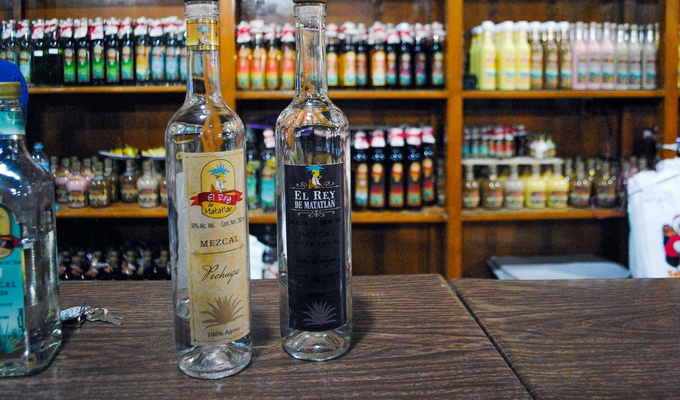Mezcal, sometimes spelled mescal, is a distilled alcoholic beverage made from any type of agave. The word mezcal comes from Nahuatl mexcalli, which means "oven-cooked agave". Traditionally the word "mezcal" has been used generally in Mexico for all agave spirits and it continues to be used for many agave spirits whether these spirits have been legally certified as "mezcal" or not, and it is also considered a drink of artisan origin.
Agave or magueys are endemic to the Americas and found globally as ornamental plants. More than 70% of mezcal is made in the Mexican state of Oaxaca, but is now produced and commercialized throughout Mexico for the national and international market. A saying attributed to Oaxaca regarding the drink is: "Para todo mal, mezcal, y para todo bien, también; y si no hay remedio litro y medio" ("For all bad, mezcal, and for all good, as well; and if there is no remedy, liter and a half"). Native fermented drinks from maguey plant, such as pulque, existed before the arrival of the Spanish.
The origin of mezcal is tied to the introduction of distillation technology from Filipino immigrants to Nueva Galicia (present-day Aguascalientes, Colima, Guanajuato, Jalisco, Nayarit, and Zacatecas) in the late 16th century. The distinctive stills originally used for the production of vino de coco (coconut sap liquor) from tubâ (coconut sap wine) were acquired and adapted by indigenous peoples in the region to produce mezcal from the fermented juices of agave heart. Vino de coco faced severe prohibition from colonial authorities since the early 17th century because they competed with liquor imports from Spain. The ban of vino de coco created the ideal circumstances for the commercialization and expansion of mezcal production. Mezcal also became banned shortly after. But they continued to be manufactured clandestinely in remote hard-to-reach areas because they were sourced from readily available wild agave plants and the Philippine-type stills were portable and easy to hide. Mezcal production gradually spread from the coastal regions to the highlands of Jalisco and neighboring regions in the 17th and 18th centuries. A variant from these regions made specifically from the blue agave became the tequila. It spread further to the rest of Mexico and parts of what is now the southern United States via trade routes.
In the 21st century, mezcal is still made from the heart of the agave plant, called the piña, in much the same way as it was 200 years ago. In Mexico, mezcal is generally consumed straight and has a strong smoky flavor. Though other types of mezcal are not as popular as tequila, Mexico does export the product, mostly to Japan and the United States, and exports are growing.
Despite the similar name, mezcal does not contain mescaline or other psychedelic substances.
